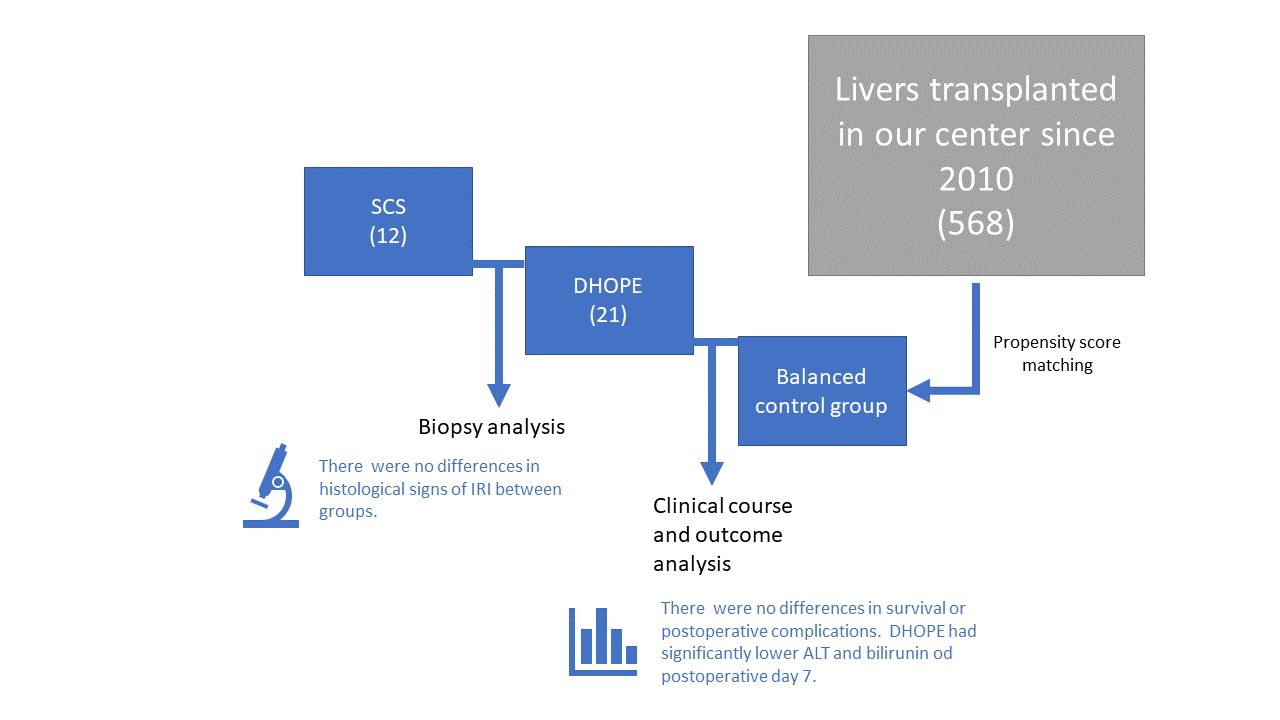Dual hypothermic machine perfusion mitigates early allograft injury regardless of prolonged cold ischemia times: A study with propensity score matching analysis
Miroslav Kolárik1,2, Martin Oliverius3, Petr Fila1,2, Petr Němec1,2.
1Center of Cardiovascular surgery and Transplantation, Clinic of Cardiovascular Surgery and Transplantation, Brno, Czech Republic; 2 Department of Cardiovascular Surgery and Transplantations, Masaryk University, Brno, Czech Republic; 3Surgery Clinic Third Faculty of Medicine, Charles University in Prague & Royal Vinohrady Teaching Hospital, Prague, Czech Republic
In consensus with worldwide shortage of suitable grafts for transplantation, centers need to extend the donor acceptance criteria. To preserve the safety of the procedure, we have implemented a dual hypotermic machine perfusion program (DHOPE), which in some cases led to prolonged total cold preservation time (CPT) of liver grafts. The aim of our study was to asses the extent and compare the difference in ischemia-reperfusion injury (IRI) between DHOPE-treated and conventionally stored liver grafts. The median of CPT in DHOPE group was 618 minutes vs. 352 minutes in the propensity score-matched static cold storage group (SCS) (p<0,05). We have also acquired biopsies of 20 livers to analyze histological signs of preservation injury. There were no significant differences in histological signs of IRI between the analyzed groups. There were no differences in primary nonfunction, early allograft dysfunction, or severe complications. Moreover, the transaminases and total billirubin were significantyl lower in the DHOPE group (ALT p=0,048; bilirubin p=0,048). In conclusion, the DHOPE provides a safe method to utilize liver grafts even in prolonged conservation time scenario without an increment risk of graft injury.

[1] Liver transplantation
[2] Mechanical perfusion
[3] Ischemia reperfusion injury
[4] hypothermic perfusion
[5] liver biopsy
